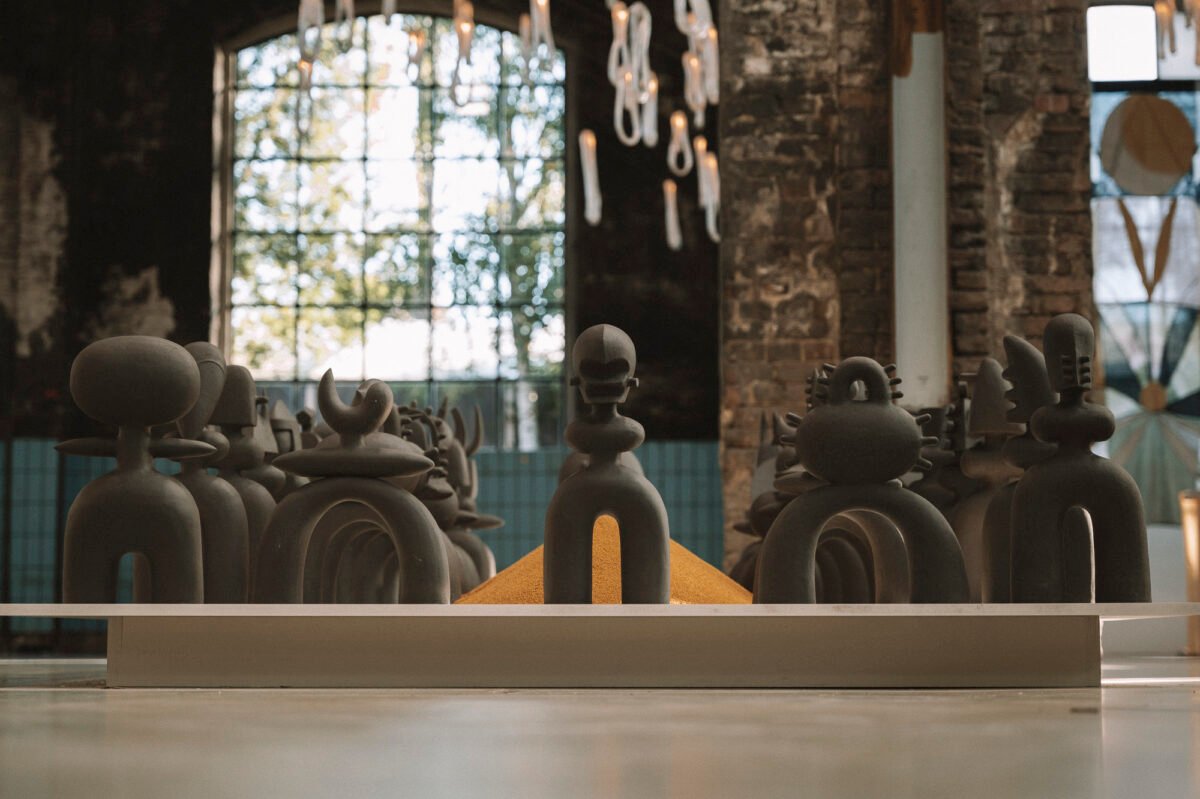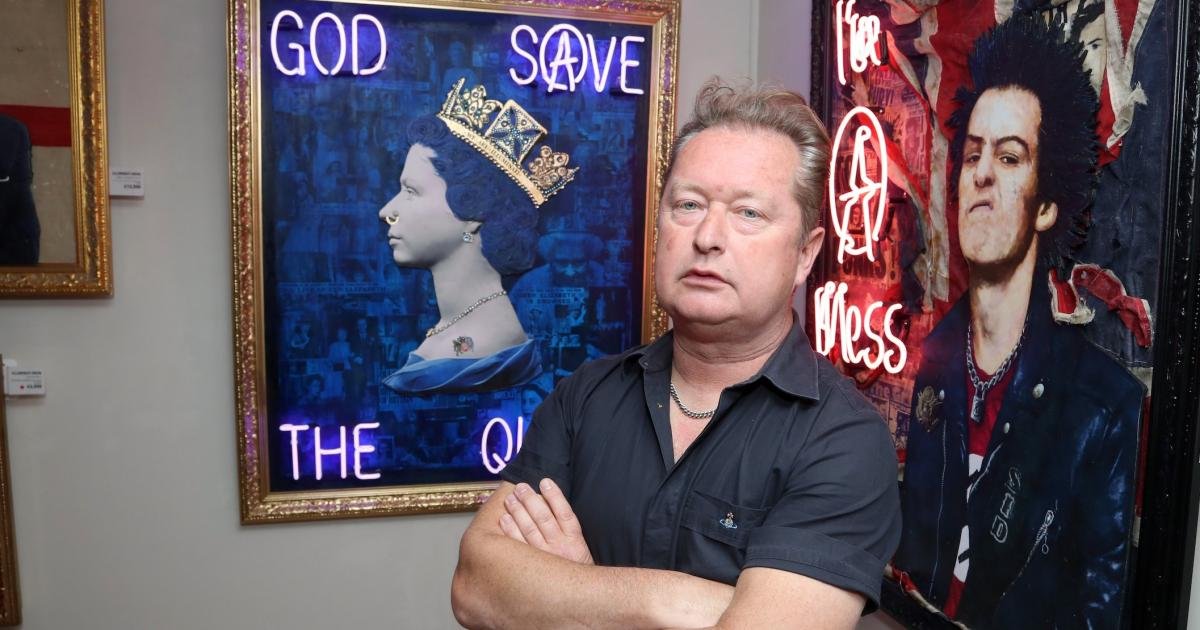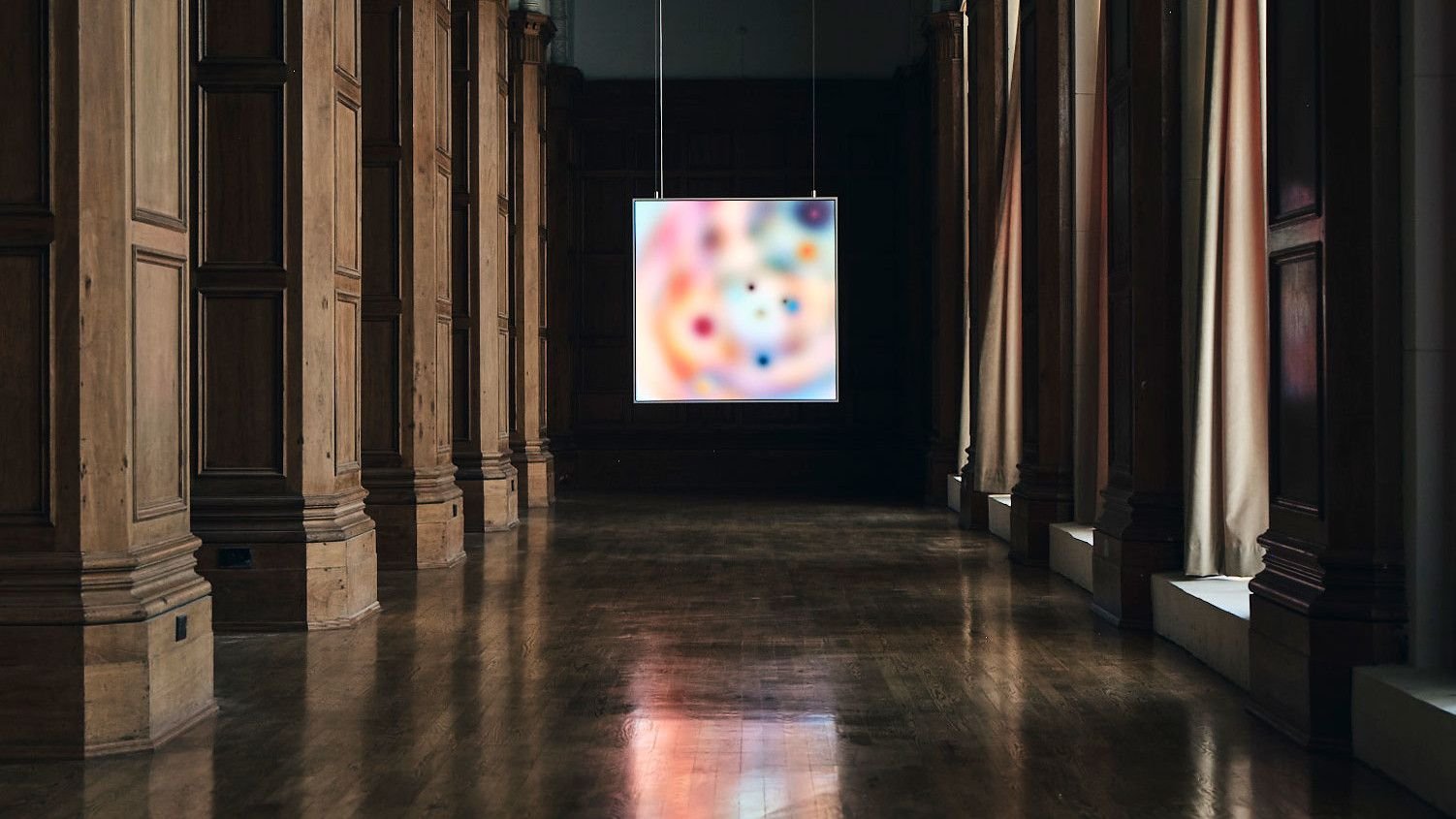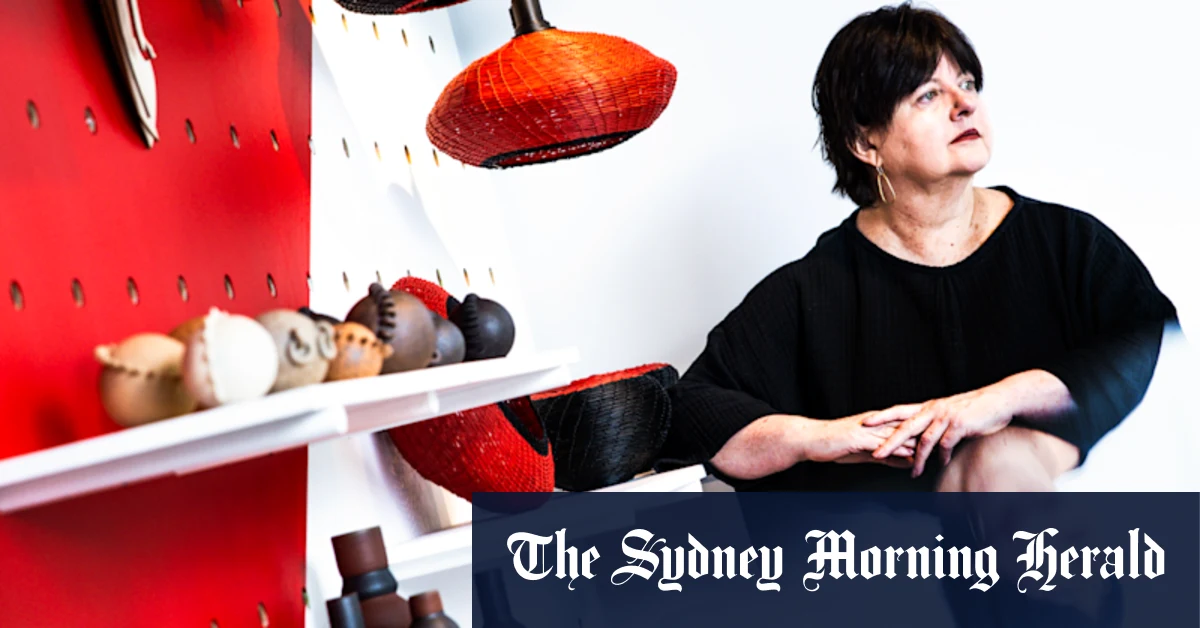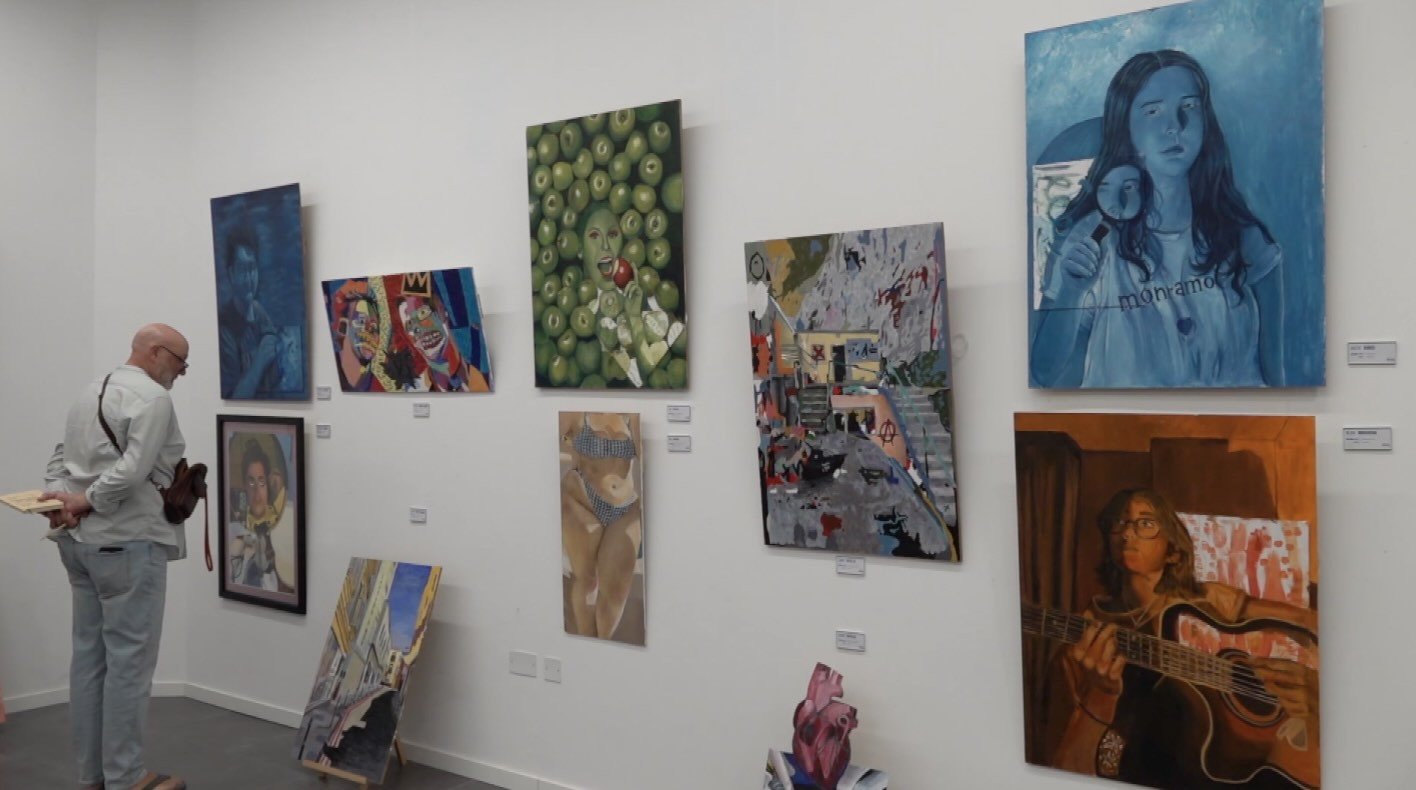It’s an incontrovertible fact that Berlin is an art town. It’s the unofficial artist capital of Europe, backed by a network of edgy contemporary art galleries and world-class institutions exhibiting the history and range of human creativity. But Berlin as a design hub? Well, that’s not quite yet been established in the city’s relentless brand of cool – perhaps until now.
While whispers flutter across the city about Berlin’s first design biennale (called Conceptual, debuting October 2025), another signal of the city’s turn towards design? ‘Crafting Community’, a monumental exhibition pulling together 19 of design’s most evocative and global practitioners at The Foundry, the creative hub launched last year by lighting lab Bocci (inside the 18,000 sq ft former iron-casting factory-turned arts complex known as Wilhelm Hallen).
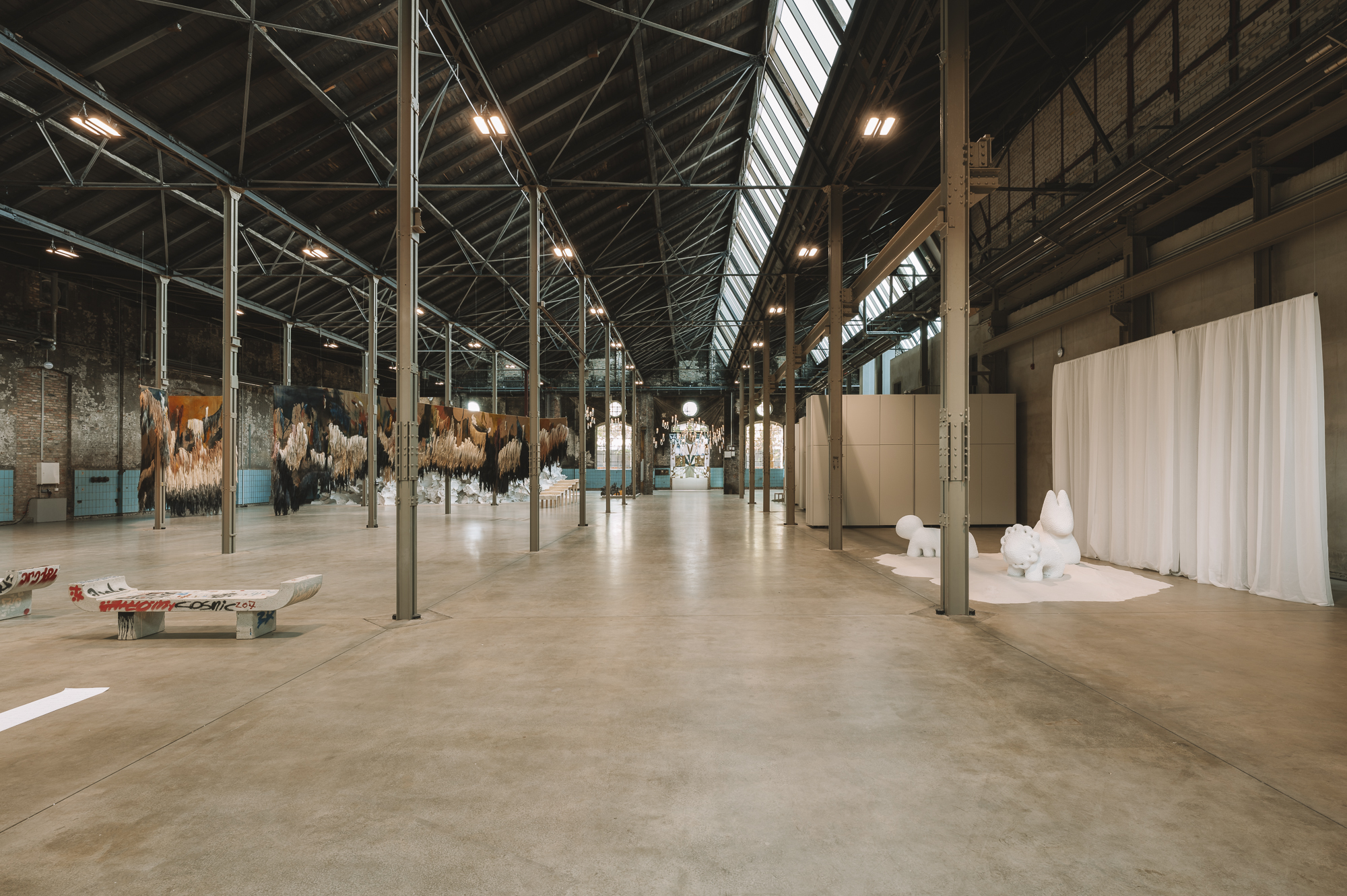
Exhibition View: Victoria Yakusha ‘The Land of Light’, 2023-25 (right), Rooms Studio, ‘Bus Stop Benches’, 2018 (left), Beatriz Morales ‘Where the WIld Things Grow’, 2022 (textile install)
(Image credit: Clemens Poloczek)
For ‘Crafting Community’, which runs until 14 September 2025 and debuts ‘a new annual platform to spotlight creativity through design and art’, Bocci tapped curator Anna Carnick, who’s perhaps most visibly known for her work with Design Miami and has been residing in Berlin for the last eight years.
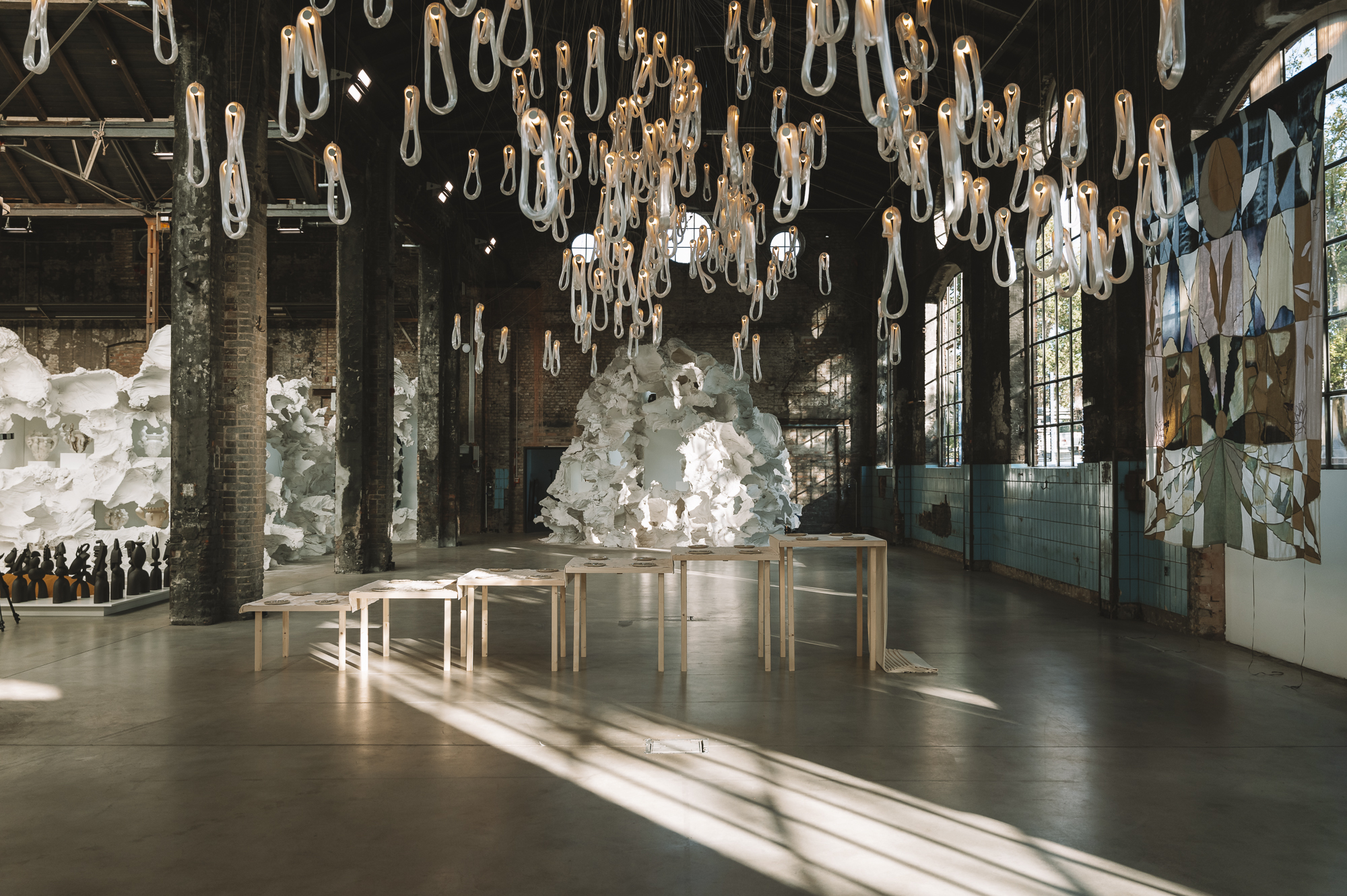
Bocci ‘87’ lamp series and Anas Chao’s ‘Homes Away from Home’, 2025
(Image credit: Clemens Poloczek)
‘We were really trying to create more opportunities to spotlight design specifically within Berlin because there are a lot of great design talents, but there aren’t so many platforms,’ says Carnick
‘Crafting Community’ was opened as part of Hallen 06, the annual art fair-of-sorts during Berlin Art Week, co-created by Bocci to activate the additional gallery residents of Wilhelm Hallen.
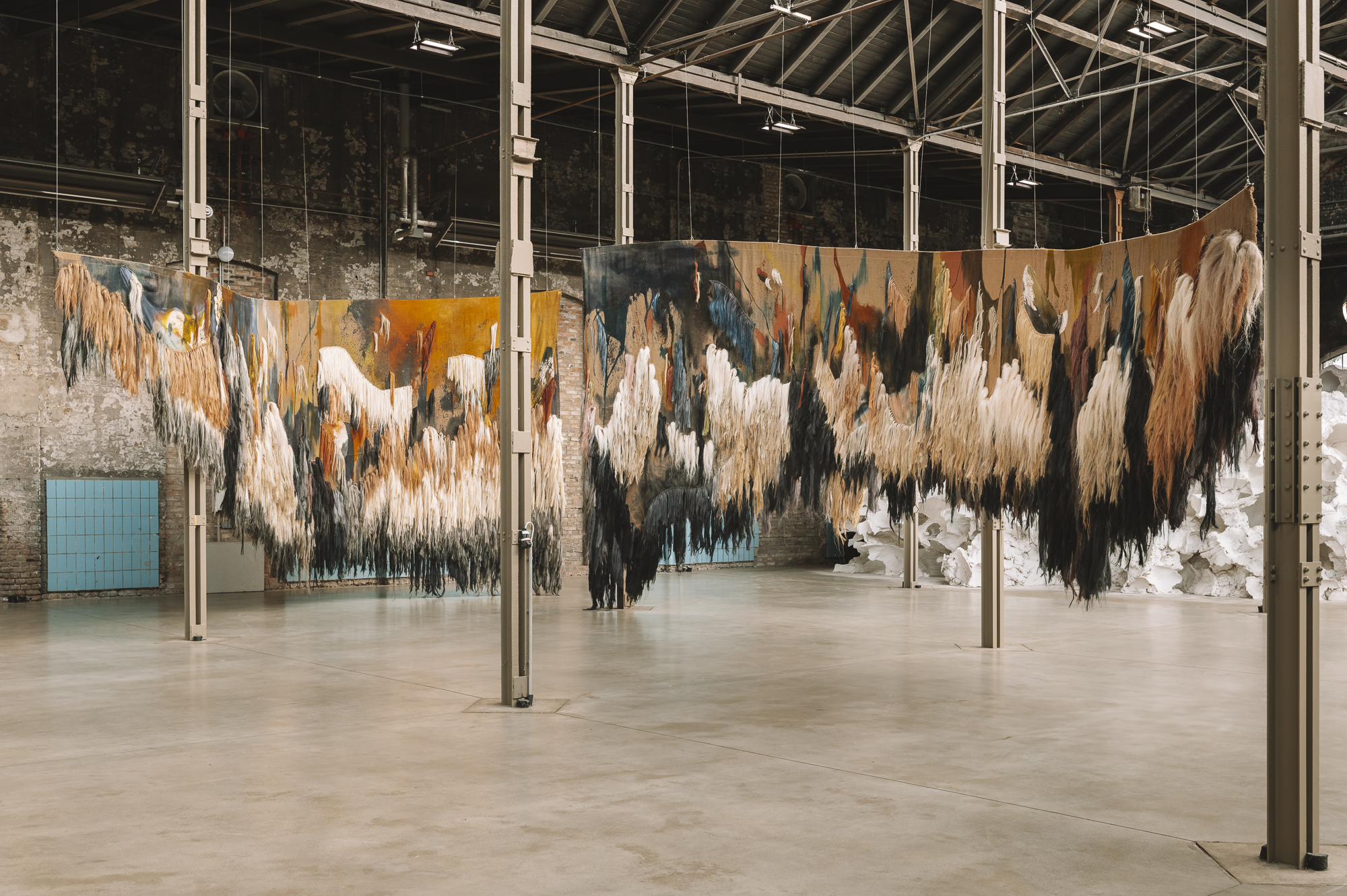
Beatriz Morales, ‘Where the WIld Things Grow’, 2022
(Image credit: Clemens Poloczek)
Long-time Berlin art and design resident, Johannes Schön, who’s also Bocci’s brand director, adds: ‘In the mid 1990s, artists were showing things everywhere, like in squatting places, and artists becoming gallerists. Design now reminds me of these times. You can now see it with other initiatives that are following our example,’ alluding to the design biennial, which arrives after Bocci’s first design/art exhibition last year, titled ‘Unexpected Guests 2’, that saw 18,000 visitors.
‘I think we are kind of ahead of the curve,’ Schön continues. ‘We gave a good start to this, to offer a bigger platform for a design to be shown.’
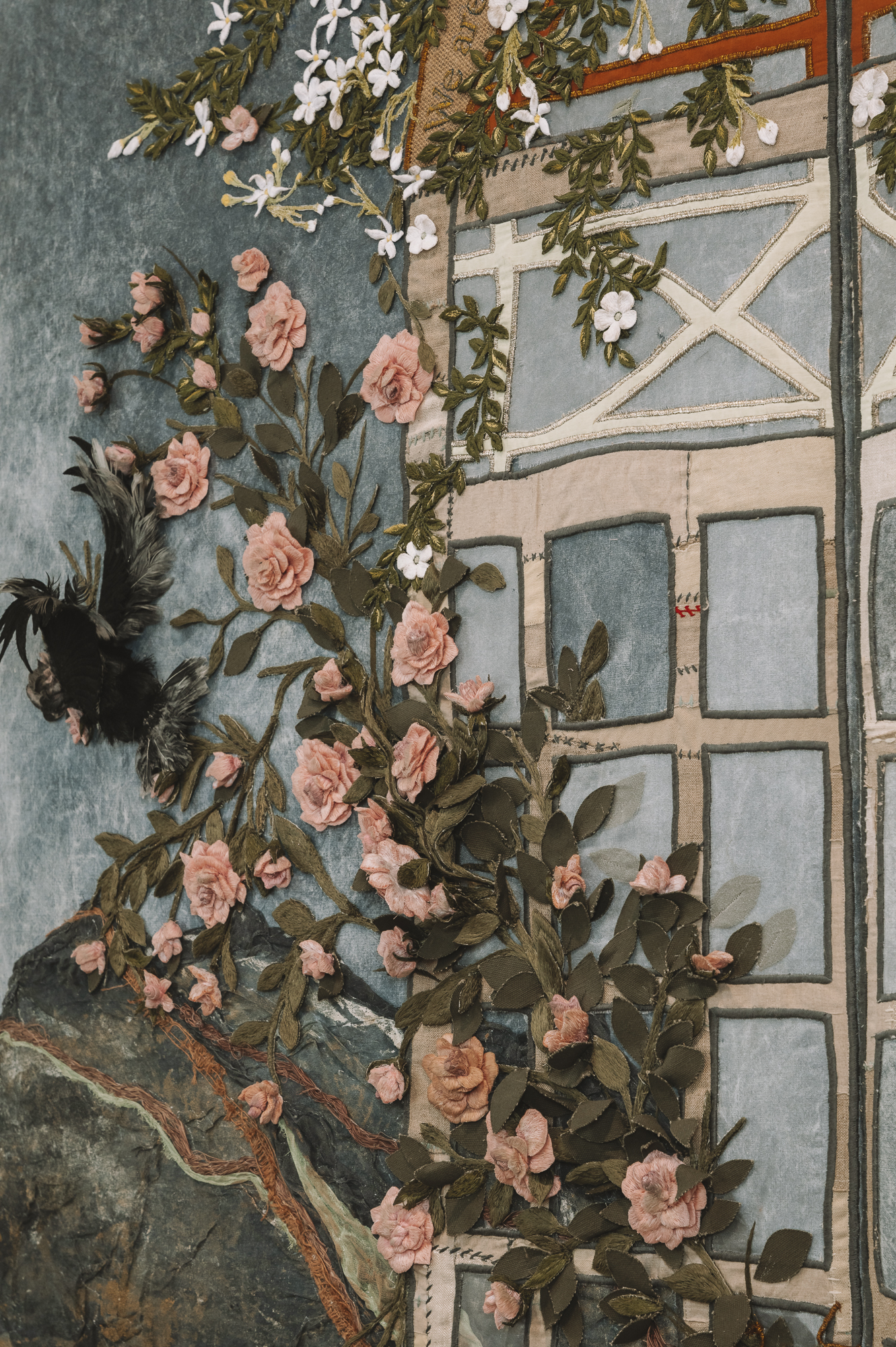
Bokja, ‘Owning Our Shadow’, 2024 (detail)
(Image credit: Clemens Poloczek)
Carnick had free reign to curate but calls this exhibition the result of ‘us happily conspiring for years. Art and design, there are bridges that can connect people.’ This is a decidedly curatorial venture, not commercial (‘it’s not a selling exhibition,’ Carnick clarifies) but is instead ‘a continuation of what we’ve been doing for 20 years’, adds Schön.
Bocci was founded by Omer Arbel in 2005 as a design studio and research lab to explore a range of production methods, ever pushing materials to their limits. ‘Experimentation and dialogue have been the core of our practice, and we work with artists, designers, and architects in our studio, and I think for us, it was like, how can we connect here?’ The Foundry is being used as a space simply to showcase (not sell).
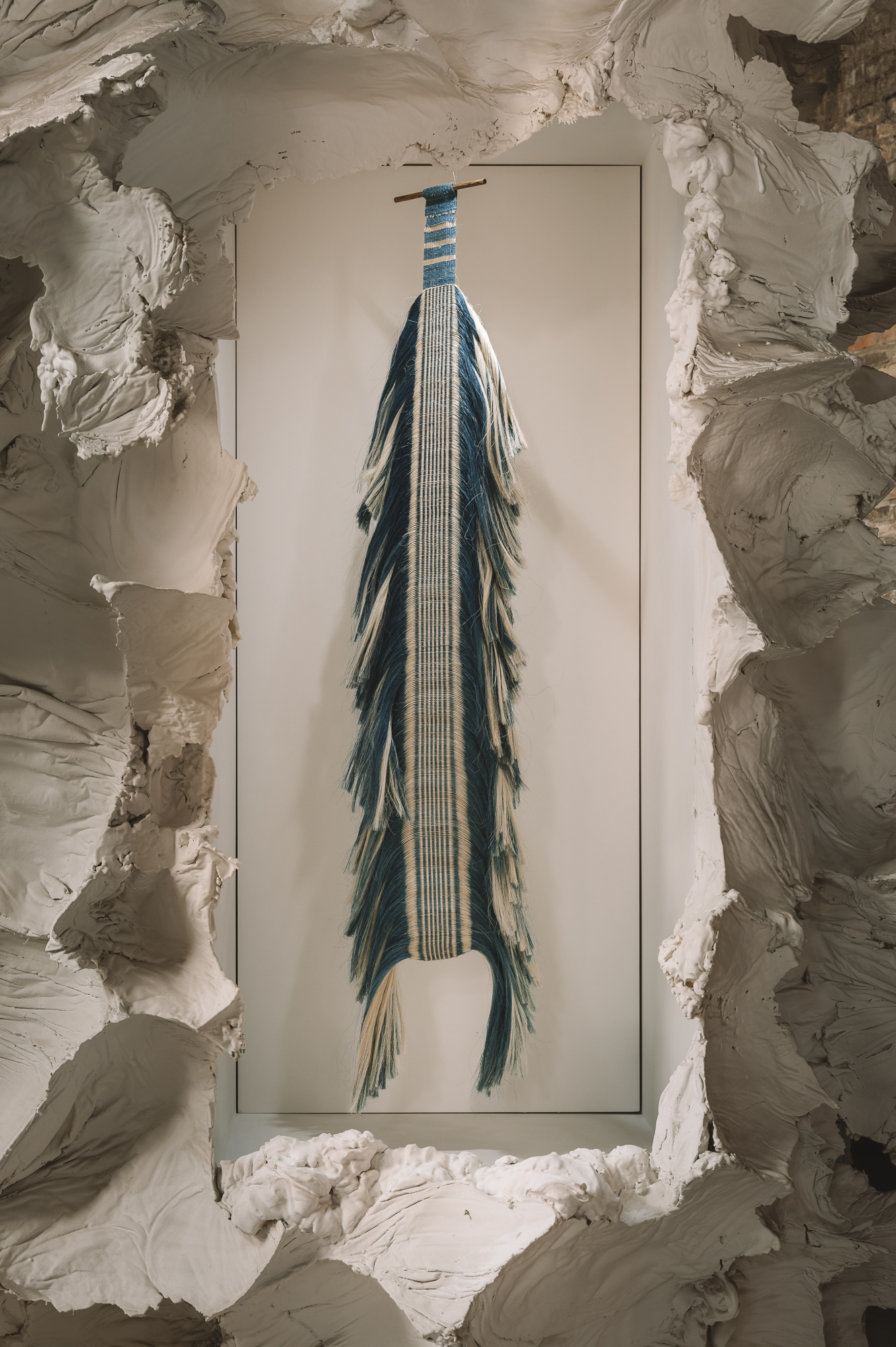
Rosana Escobar, ‘Indigo Spine’, 2025
(Image credit: Clemens Poloczek)
With familiarity and fidelity in mind, Carnick approached ‘Crafting Community’ as a way to honour exceptional craft made by thoughtful practitioners who, on the surface, don’t have inter-related practices other than intentionality. ‘In this moment, when so many stories and histories are under threat of being erased or rewritten, it is more important than ever to create space to honour one another’s stories and to share them,’ she says.
In perhaps a statement of how far-reaching community connections can be, the artists and designers in this titular exhibition hail from across all cultures and continents, and ‘are in some way giving back to their own community’, explains Carnick.
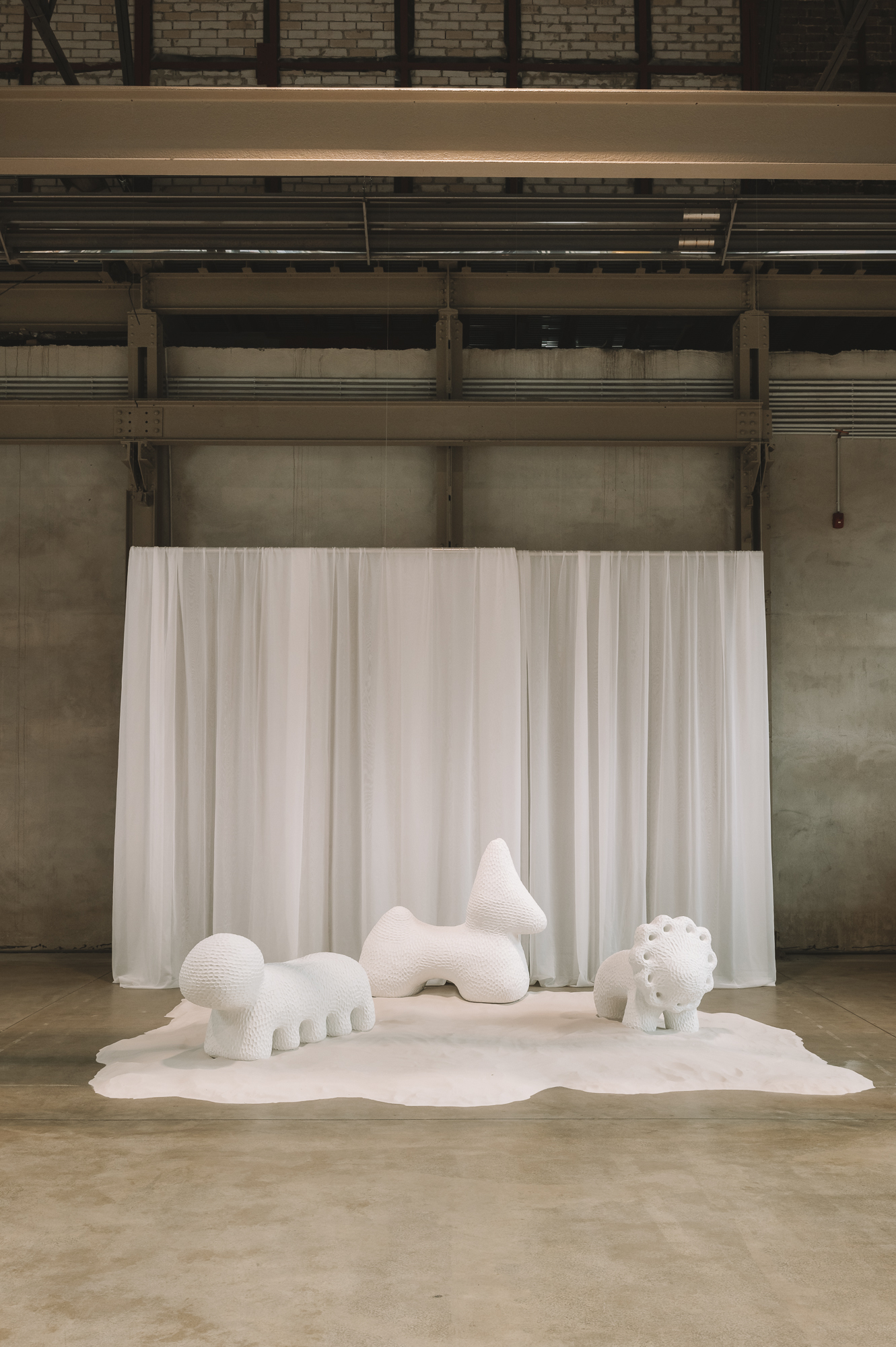
Victoria Yakusha, ‘The Land of Light’, 2023-25
(Image credit: Clemens Poloczek)
The show includes top-line names Rooms Studio (Georgia), Noe Kuremoto (UK), Beatriz Morales (Mexico), Estefania de Ros (Guatemala), Anas Chao (Taiwan via Saudi Arabia), Mischer’Traxler Studio (Austria), as well as more emerging talent like Yassine Ben Abdallah (Réunion), Bokja (Lebanon), ibiyanε (Martinique).
‘There’s a lot of shared values between these artists and designers,’ explains Carnick. ‘There’s an openness and an intention to share their talent and their stories, and there’s an openness to also hear other people’s stories.’
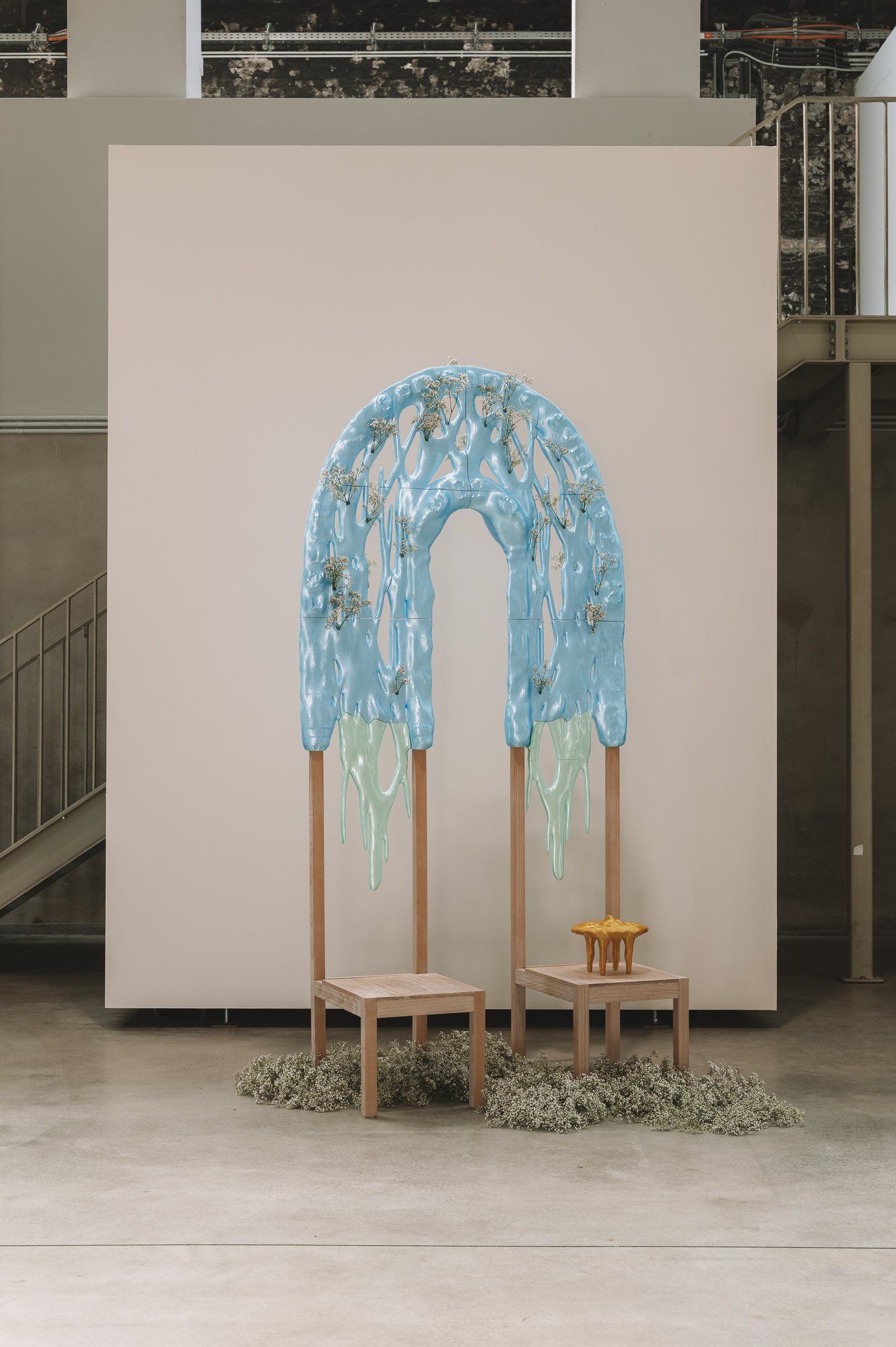
Platalea Studio, ‘God’s Love Arch’, 2024
(Image credit: Clemens Poloczek)
Yet, indeed, community is inherently political, and thus, so is the show. ‘This is a reminder and example of individual and collective power we have,’ says Carnick. Though there are no big Ai Weiwei-esque or Banksy-style statements included, the strongest tie amid all these practitioners is their subtle and subversive acts of resistance through these objects, whether it’s the preservation of ancestral wisdom or a material response to governing policy.
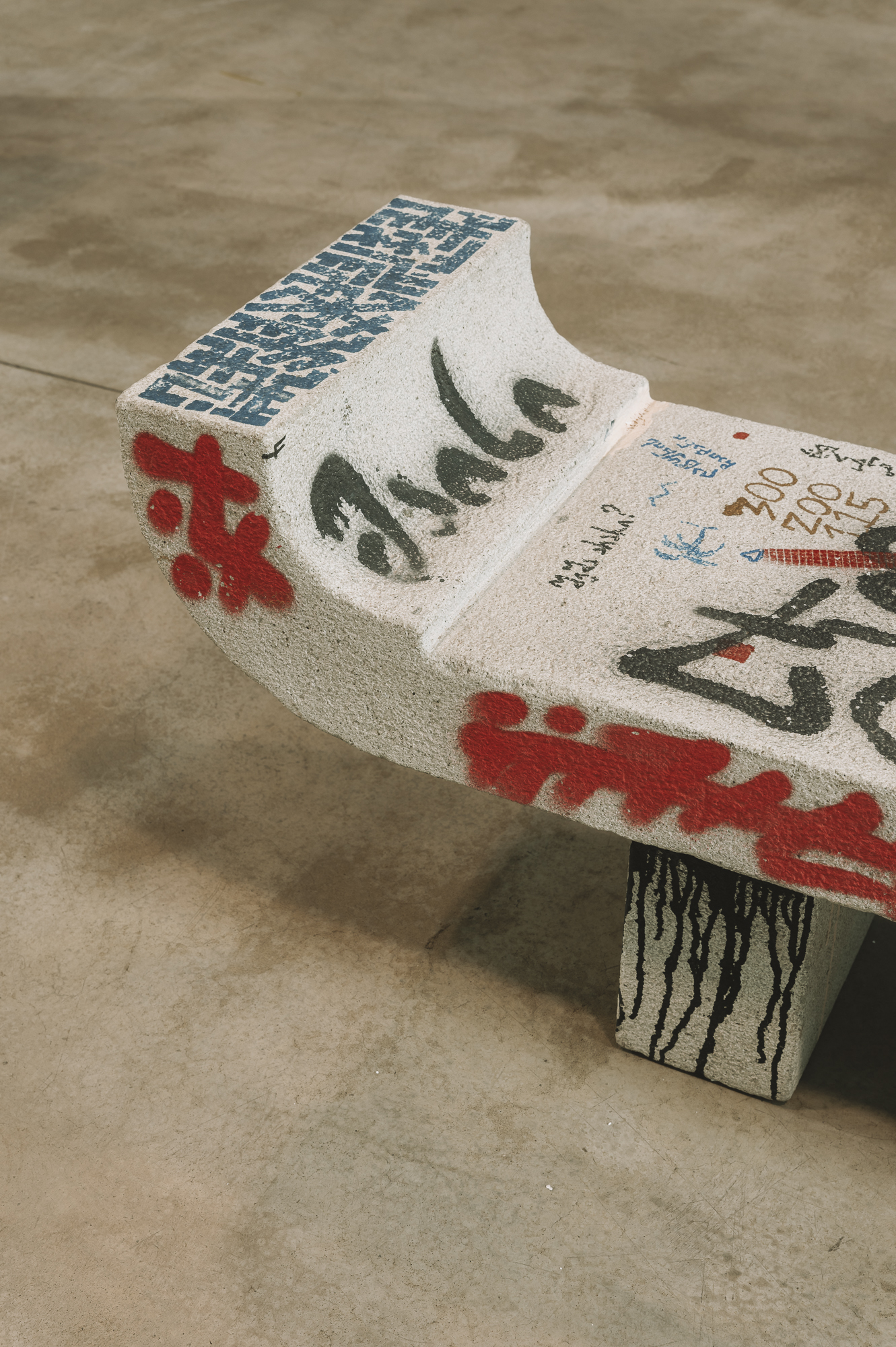
Rooms Studio, ‘Bus Stop Benches’, 2018
(Image credit: Clemens Poloczek)
That sounds incredibly high-minded, but consider something like Tiblisi-based Rooms’ ‘Bus Stop Benches’, where the studio collaborated with artist Max Machaidze to graffiti replicas of Soviet-style public seating (for more on Machaidze, see Wallpaper’s trip to Tbilisi), or Rozana Montiel’s participatory Collective Correspondence installation of modifying letters and literary texts in German, English and Spanish, and the less abstracted these political gestures become.
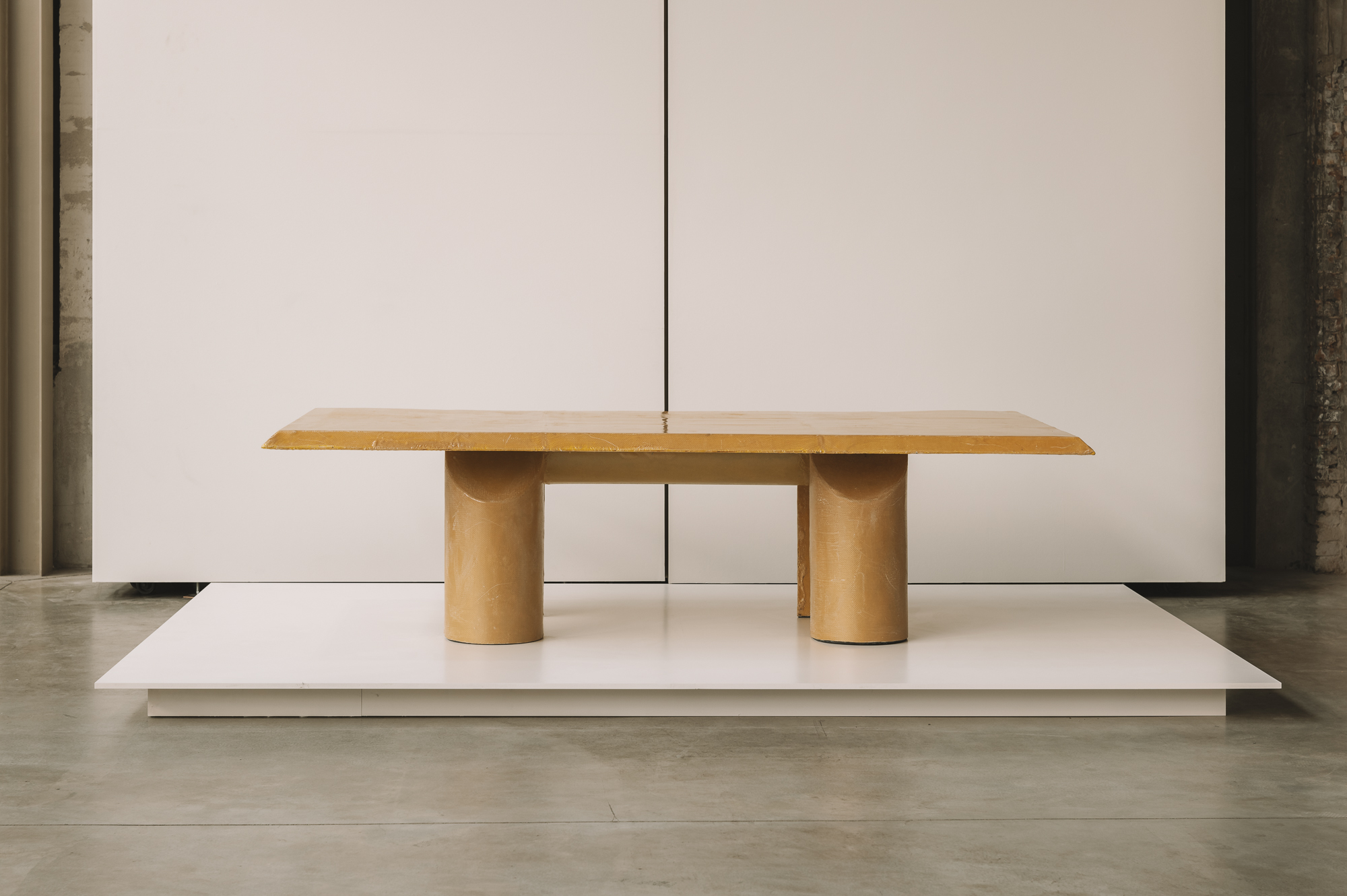
Jerome Byron, ‘Everyday Altar’, 2025
(Image credit: Clemens Poloczek)
Take Victoria Yakusha’s Ukrainian folkloric creatures from her ‘Land of Light’ series that are meant as a direct response to the Russian invasion of her homeland; when she tried to envision how to get through these dark times, she imagined these mythical beings who could guide her and others out.
Then there’s Jerome Byron’s kevlar dining table dubbed ‘Everyday Altar’, reflecting and embodying the increasingly militarised presence in Los Angeles, where he lived for nine years (he currently practices in Berlin).
Meanwhile, Chaos’ Homes Away From Home, an installation of dining plates with tribute texts in English and Arabic set on hand-woven tablecloths of restaurants where this diasporic artist ‘broke bread’ to feel at home across Saudi Arabia, Taiwan and the Netherlands.
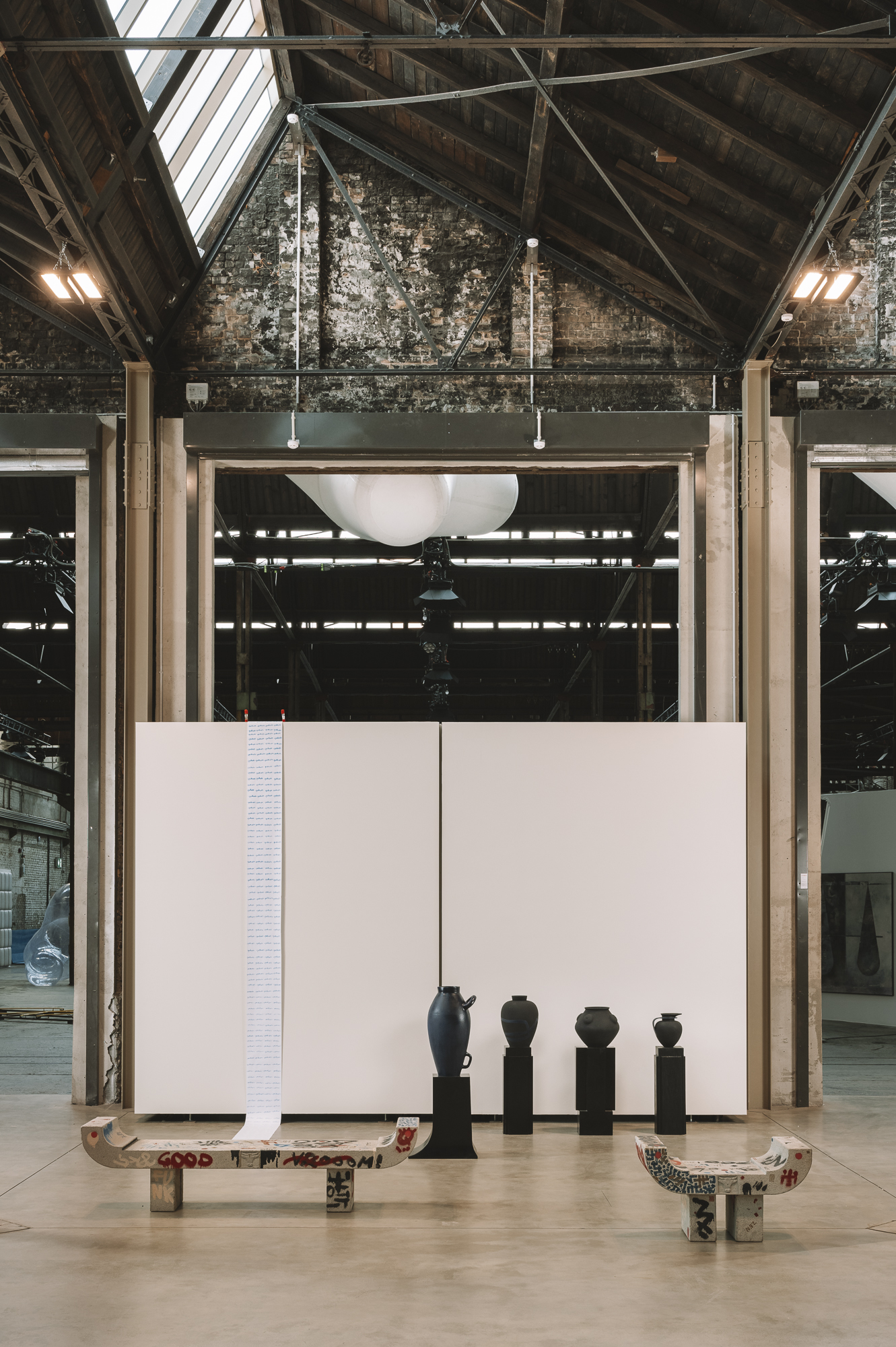
Rooms Studio, ‘Bus Stop Benches’, ‘The Shapes of Resistance’ vessels and ‘Signature Paper’
(Image credit: Clemens Poloczek)
‘Anna says this is about stories, but I think she’s seeing the soul, the soul of people and objects,’ said Golnar Roshan, of Amsterdam-based studio Rive Roshan, whose 3D-printed sand ‘Voices Vessel 03’, inspired by a pleated skirt in motion, was selected for its evocation of the current struggle for women’s liberation in Iran. (Roshan is Persian by way of Australia.)
‘When somebody makes something, they put themselves into it,’ adds Estefania De Ros, whose Visions of the Lake commission deploys traditional Mayan cosmology and weaving techniques practiced by Indigenous artisans that are both under threat of extinction from globalized means of production and appropriation. Change lies in community, too, and maybe more than ever, we need to see to believe how in fact we are stronger together.
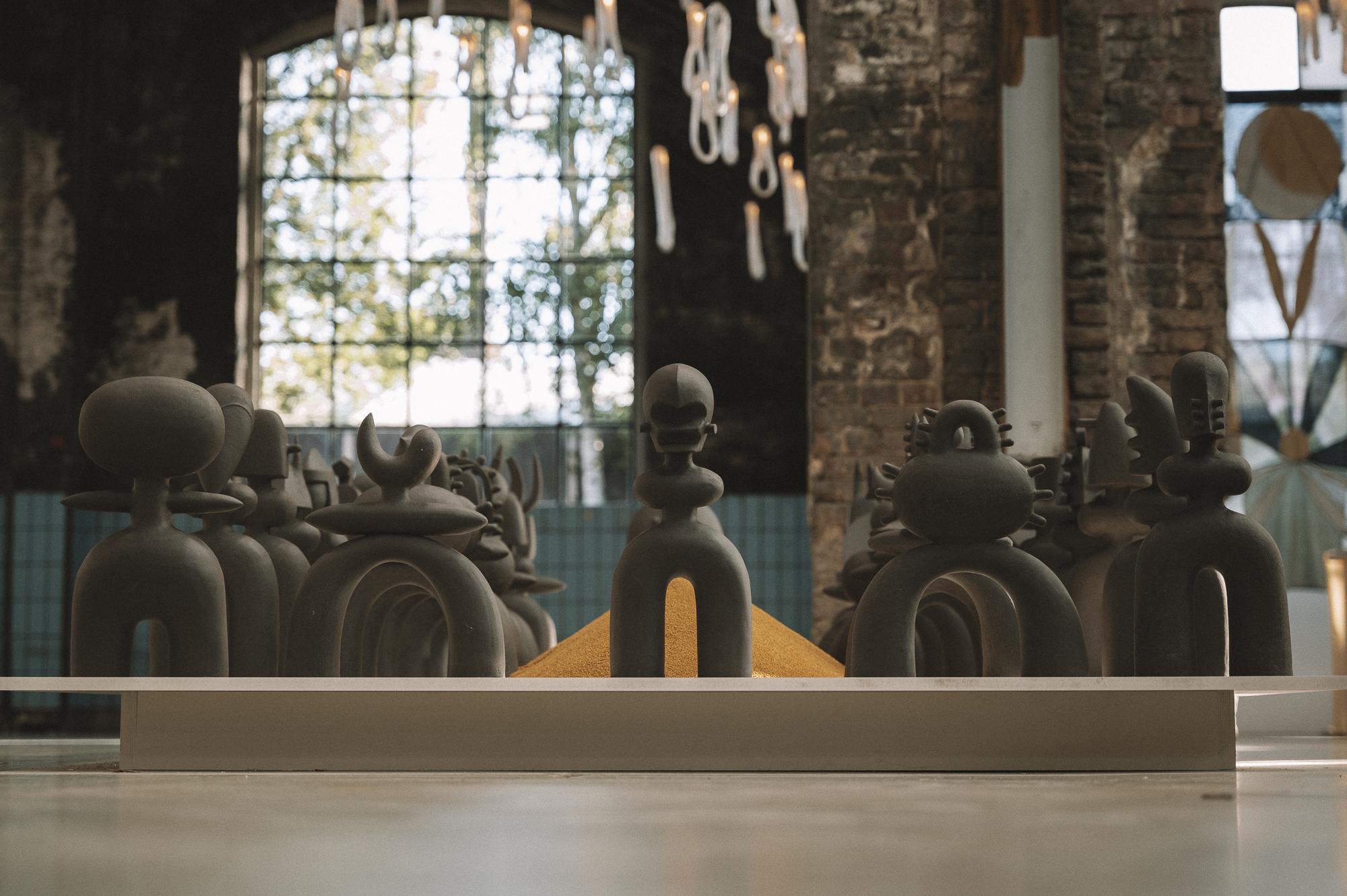
Noe Kuremoto, ‘Haniwa Warriors and Jomon Vessels’, 2025
(Image credit: Clemens Poloczek)
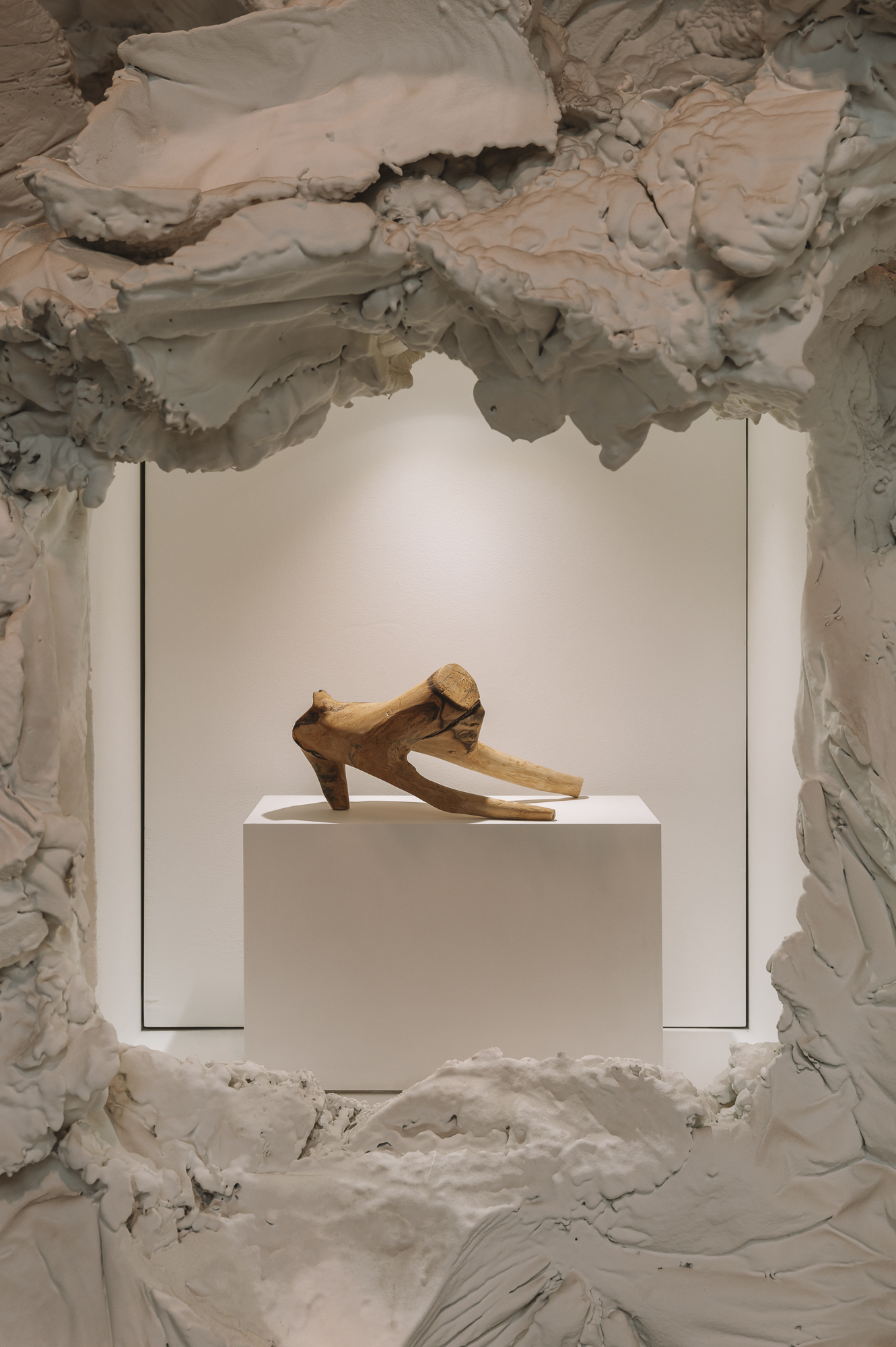
Ibiyane, ‘elombe 016: ikasa’, 2023
(Image credit: Clemens Poloczek)
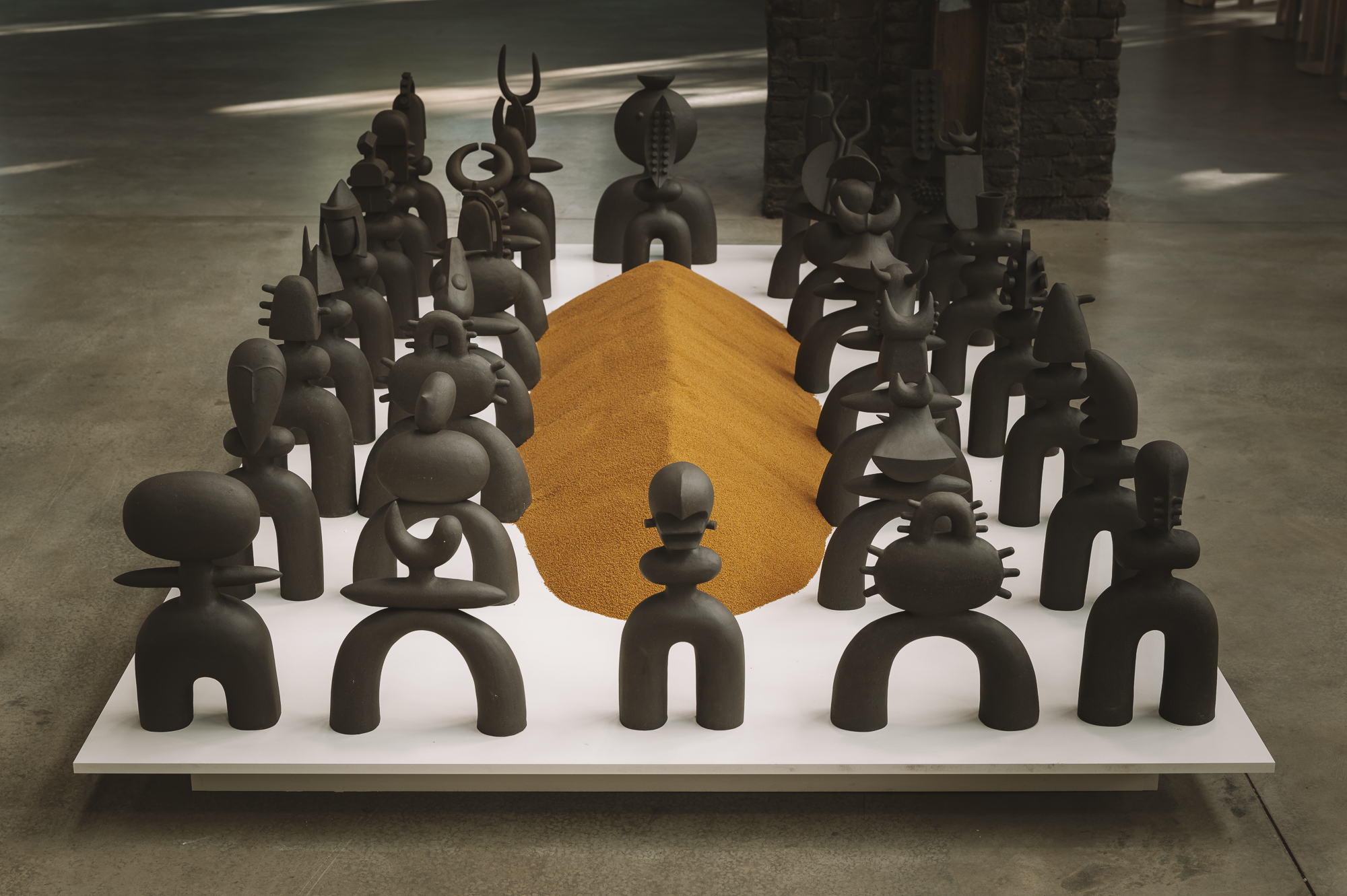
Noe Kuremoto, ‘Haniwa Warriors and Jomon Vessels’, 2025
(Image credit: Clemens Poloczek)
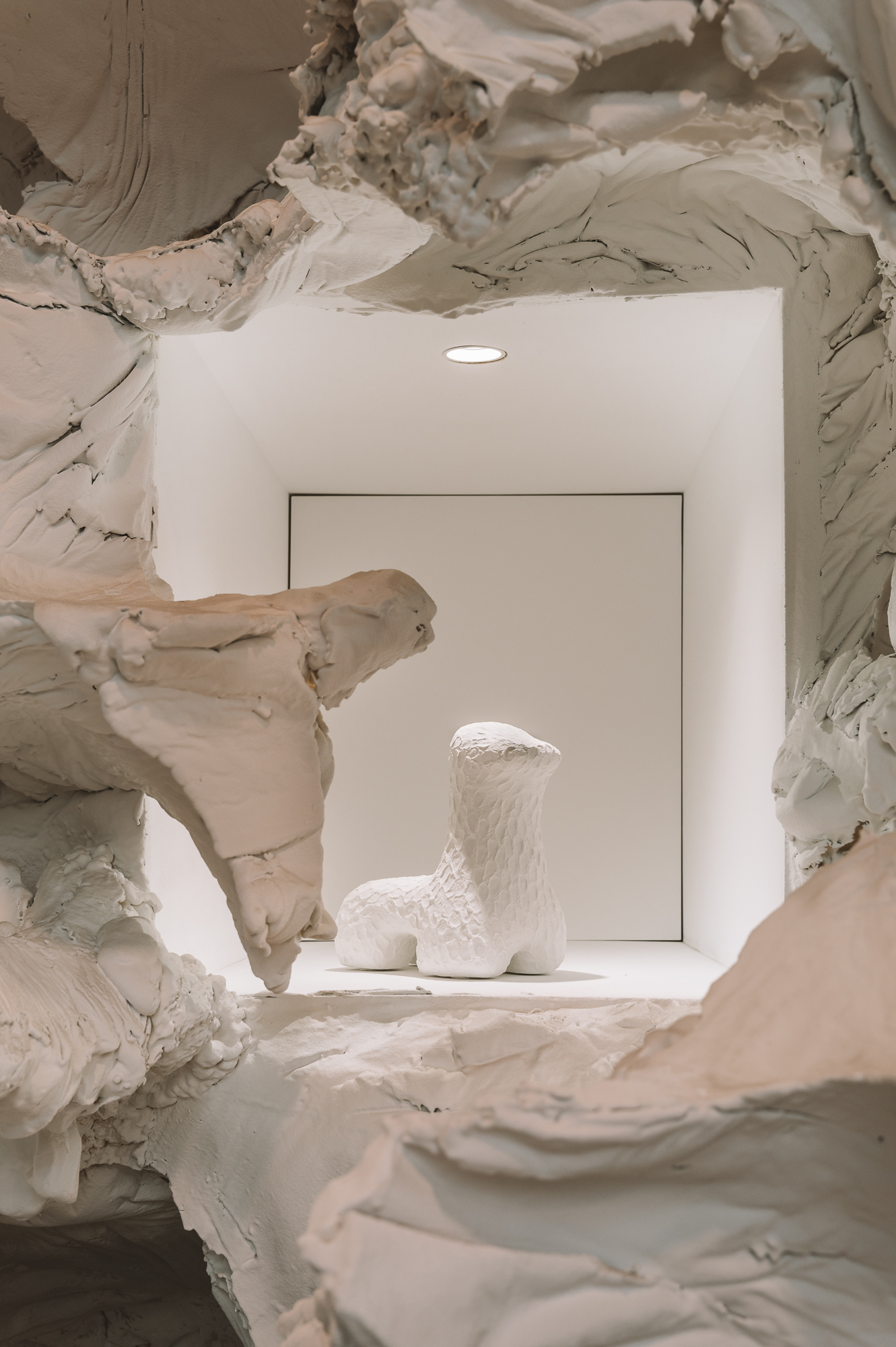
Victoria Yakusha, ‘The Land of Light’, 2023-25
(Image credit: Clemens Poloczek)
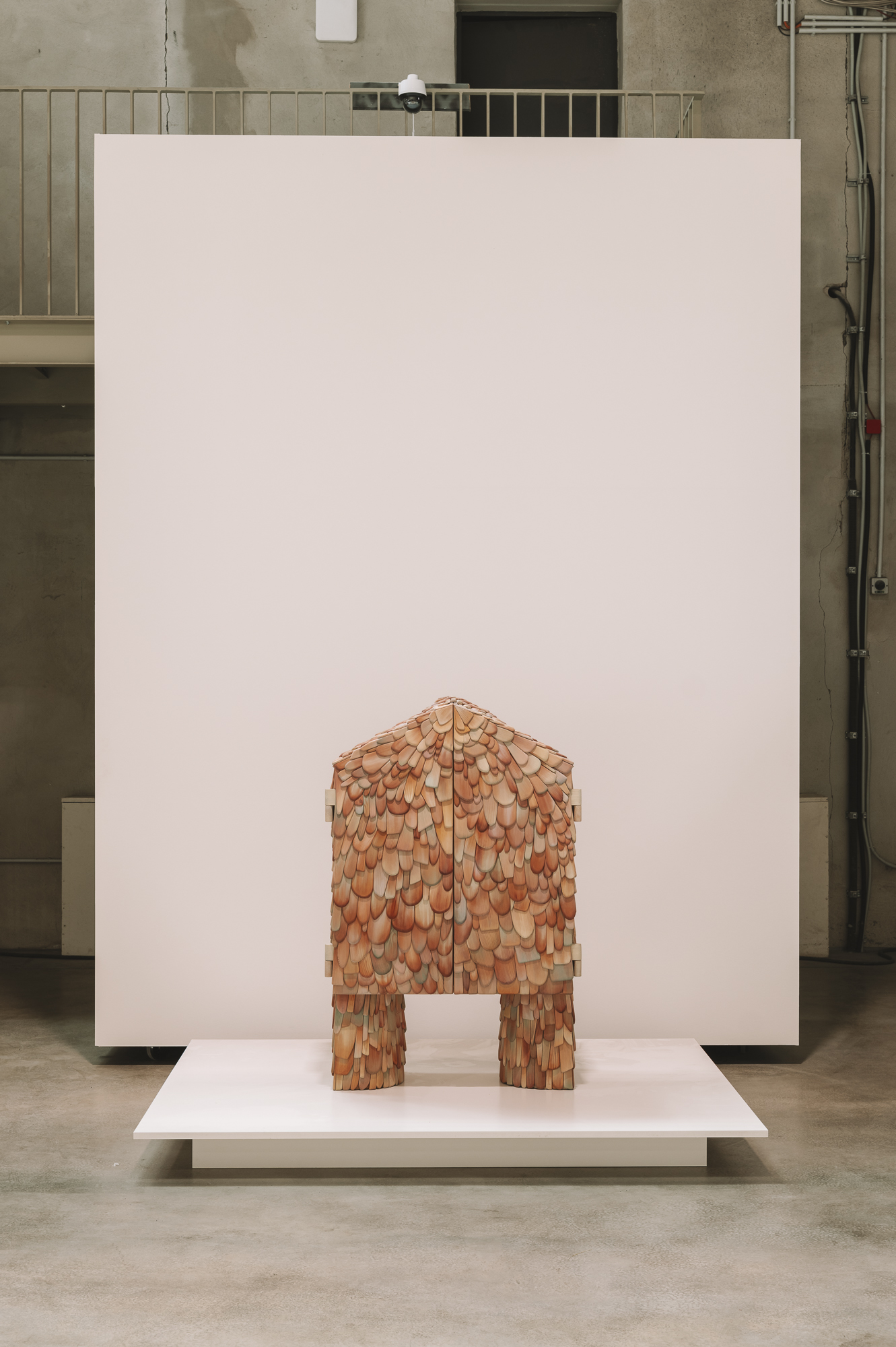
Luke Wedwerth and Corinna Dehn, ‘Armadillo Hope Chest’, 2025
(Image credit: Clemens Poloczek)
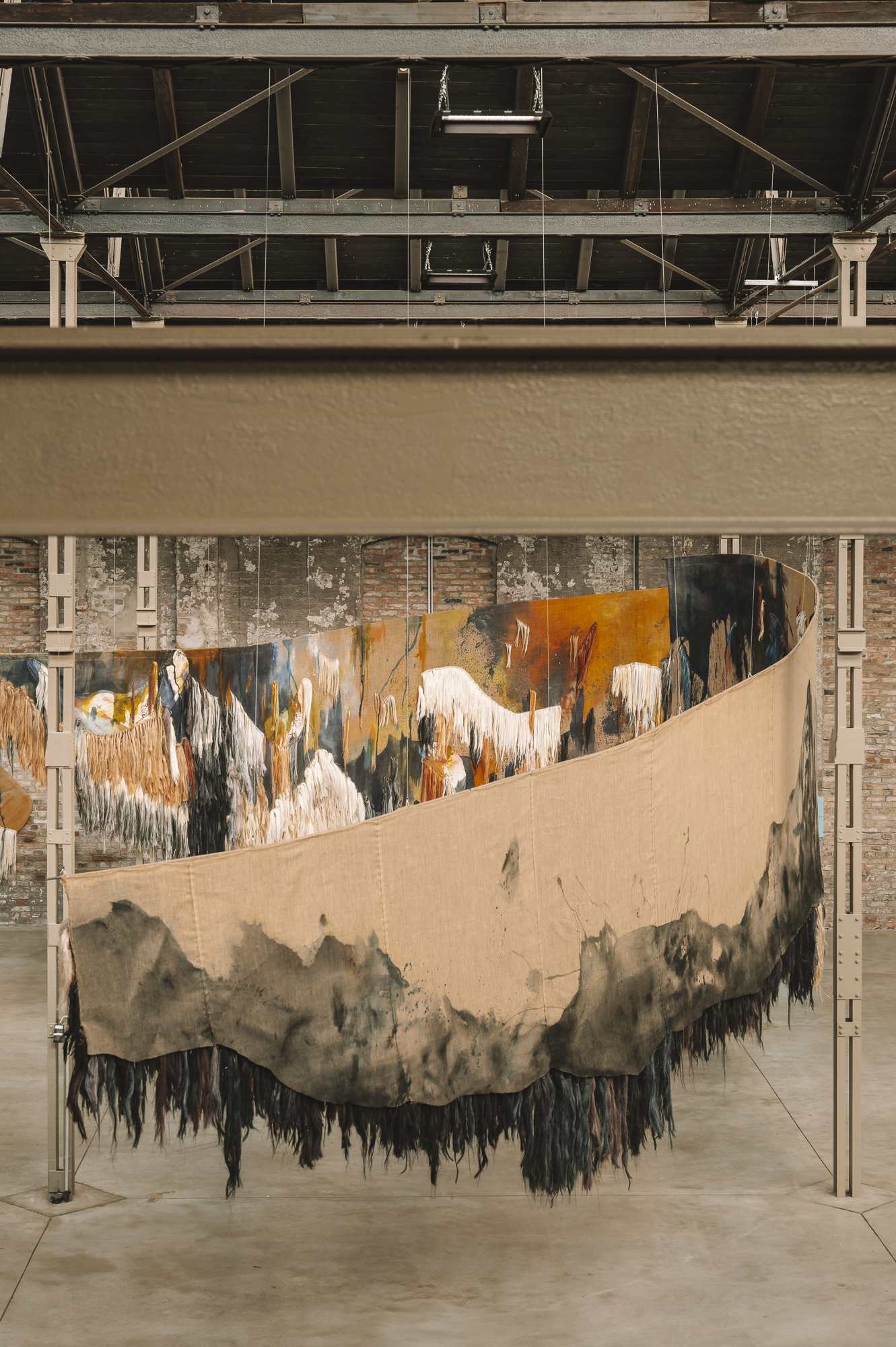
Beatriz Morales, ‘Where the Wild Things Grow’, 2022
(Image credit: Clemens Poloczek)
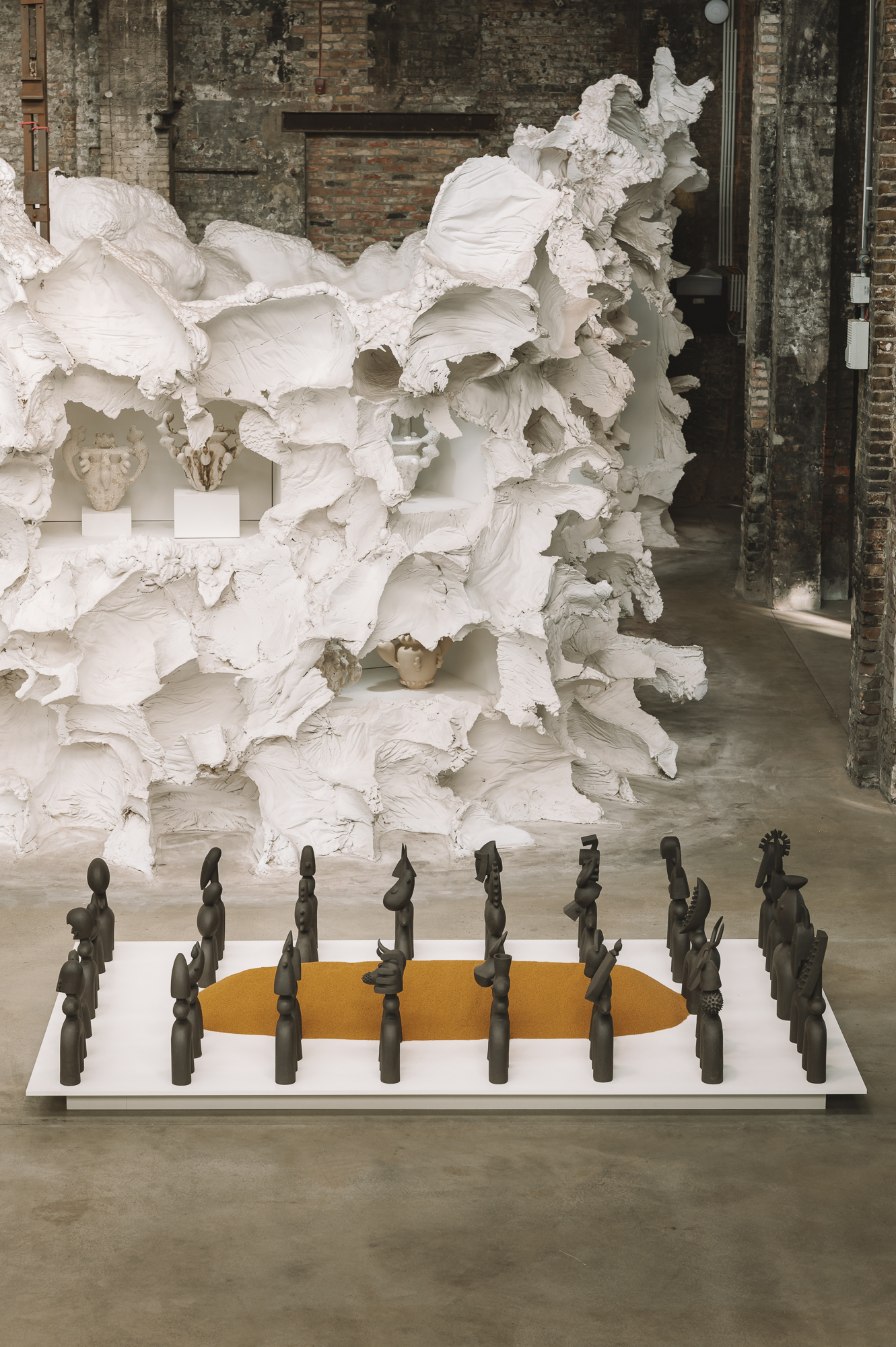
Noe Kuremoto, ‘Haniwa Warriors and Jomon Vessels’, 2025
(Image credit: Clemens Poloczek)

